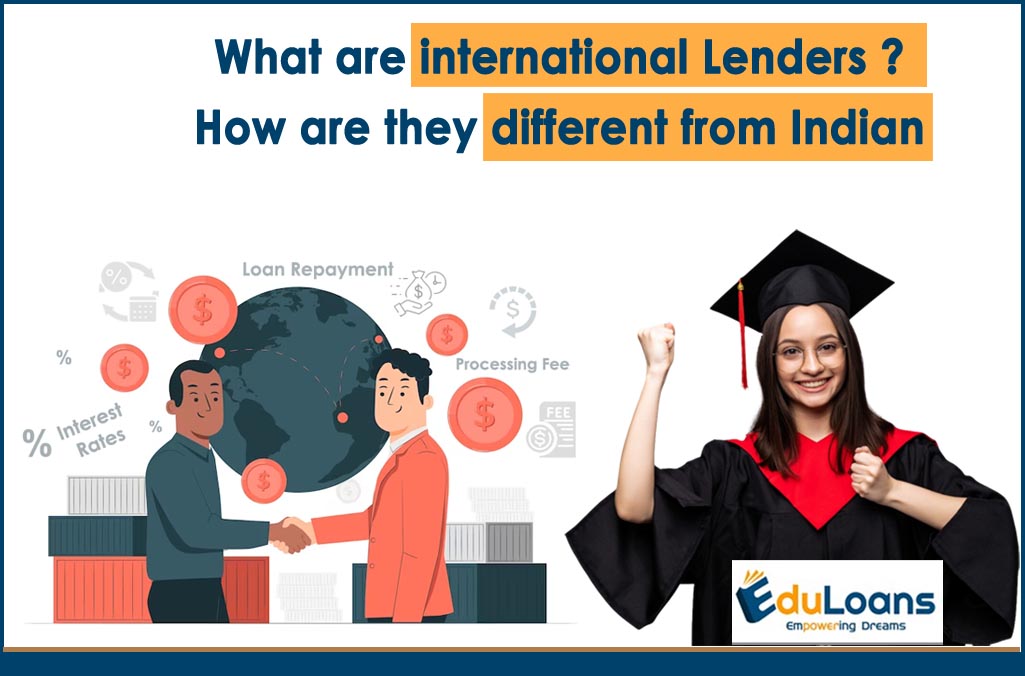
What Are International Lenders? How Are They Different From Indian Lenders?
The COVID-19 pandemic has undermined the global economy. As a result, students are looking for different resources for student loans, and parents are shouldering heavy debt to fund education abroad.
Indian lenders aim to provide financial aid to deserving students willing to pursue their dream of overseas education. Applying for a student loan has become way more complicated due to the various education loan policies of lenders in India. With the emergence of international lenders, also known as foreign lenders, India has put students in a dilemma where they face trouble choosing the best lender to fund their overseas student loans in India. Therefore, the comparison between Indian and foreign lenders can be determined by their reliability and the quality of services.
International Lenders
Governments and banks often borrow money from international lenders and foreign-based financial institutions. The World Bank and its associates — the International Monetary Fund and International Finance Corporation – are major international lenders. There are other international lenders, such as African Development Bank (AfDB), Asian Development Bank (ADB), and European Development Bank (EDB). These international lenders extend credit facilities to governments and banks in developing economies on beneficial terms.
How International Lenders are different from Indian Lenders?
It is necessary to know certain factors to understand the difference between international and Indian lenders. Let’s look at these factors.
Interest Rates
Students must know the interest rates provided for education loans in India by Govt and Indian lenders. Most Indian lenders calculate education loan interest rates abroad based on MCLR plus spread. The MCLR is determined based on the base lending rates. This spread percentage is a premium amount levied by banks in addition to the MCLR. The interest rate of Indian lenders falls from 8% to 10%.
The interest rates of international lenders are calculated based on LIBOR (London Inter-Bank Offered Rate). LIBOR is the average value of the interest rates submitted by global banks and NBFCs. LIBOR values differ almost every two months, and this variation influences the foreign lenders’ final abroad education loan interest rate. The difference in currency values also plays an important role in deciding their education loan for abroad studies interest rate. International lenders follow different student loan terms and conditions, which also apply to the interest rate. International lenders offer interest rates between 9.25 % to 16 %.
Processing Fee of International and Indian Lenders
The processing fees charged by international lenders are charged in terms of USD, whereas Indian lenders charge processing fees in terms of INR.
International lenders charge 2.5% to 5% as processing fees. Therefore, the amount is much higher when translated in INR due to the value difference.
Processing fees of student loans in India is 10,000 + Other charges applicable. Processing fees of Private Banks are 0.9% to 2%. These figures are slightly on the higher side in comparison to the processing fees charged by government banks. However, the amount charged by Indian private or public lenders is always lesser than international lenders.
Loan Sanctioning – International and Indian Lenders
Public banks in India provide student loans only based on collateral. The maximum loan amount granted is 1.5 Cr. NBFCs and private banks in India usually grant study abroad student loans without collateral security. The maximum loan amount granted is up to INR 50 Lakhs. However, it may vary from case to case depending on the eligibility. For international lenders, the final loan amount offered only provides the loan amount which can cover the first-year expenses. International lenders will grant the education loan for the remaining course once the students finish their first year. Therefore, students must understand that international banks’ loans depend on the candidate’s performance in the first year. The maximum education loan offered by international lenders is USD 25,000 for students.
Loan Repayment – International and Indian Lenders
International lenders’ student loan repayment policies are similar to those of Indian NBFIs and private banks. Students who borrow from international lenders are expected to begin their interest payment from the very next month, following their first disbursement. Indian public banks grant a payment-free moratorium to students availing of an education loan for studies abroad. Although Indian NBFIs do not grant the same, students can partially pay the interest amount for unsecured education loans during the moratorium period.
Final Remark
Borrowing student loans from international lenders might seem viable, but the reality is different. However, with little understanding of the system, student loans granted by international lenders can prove to be more beneficial in the long run. At EduLoans, our counselors cater to your requirements and assist in keeping the regulations of international and Indian lenders. Reach out to us for international lending.